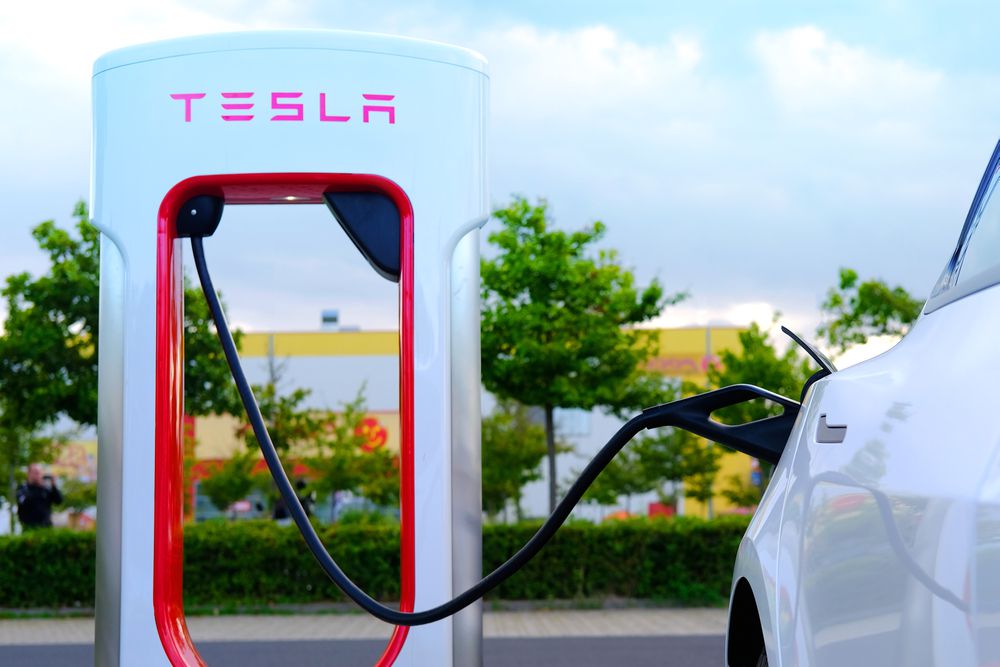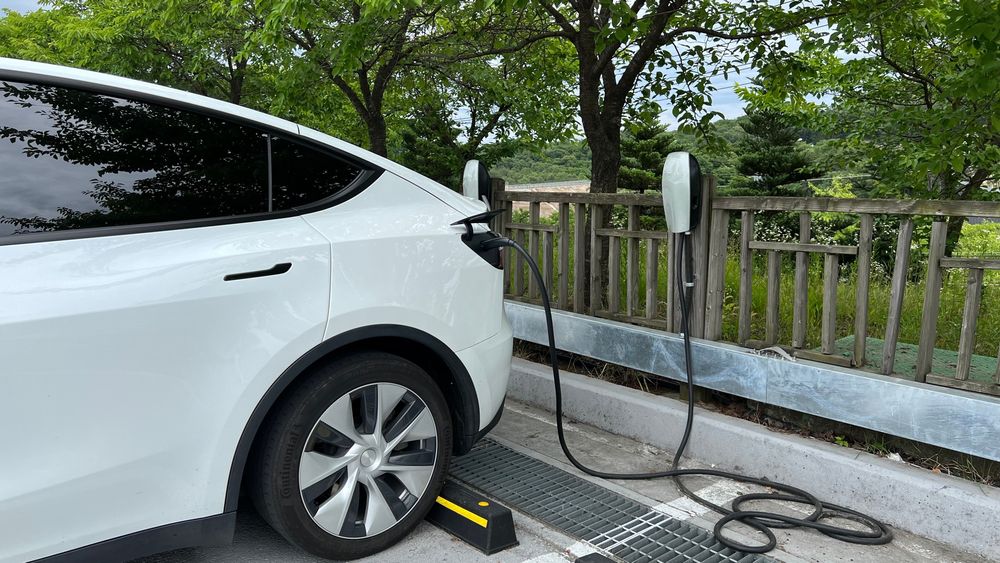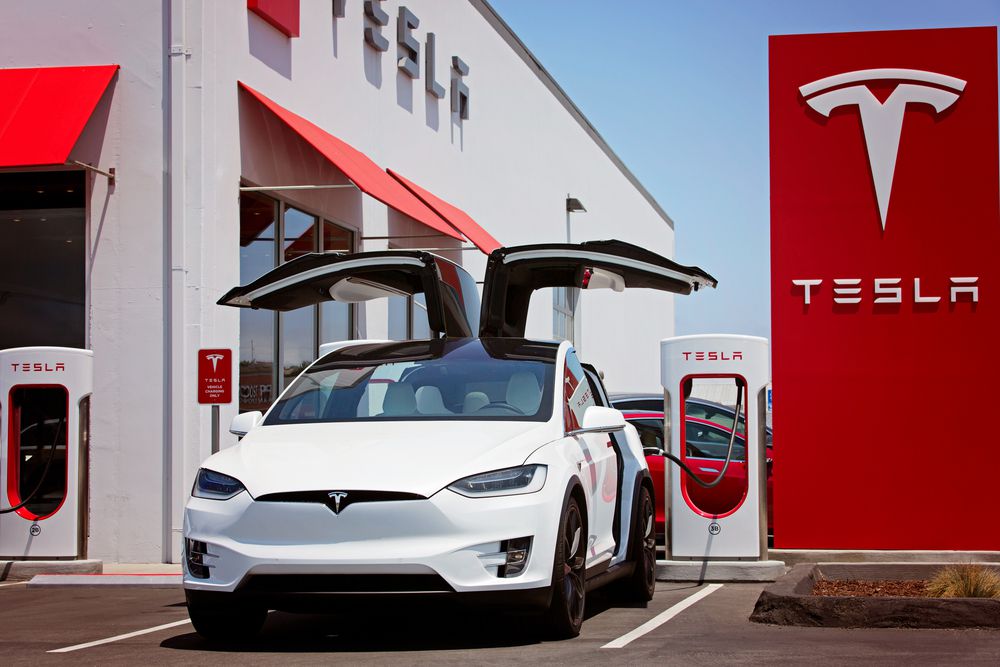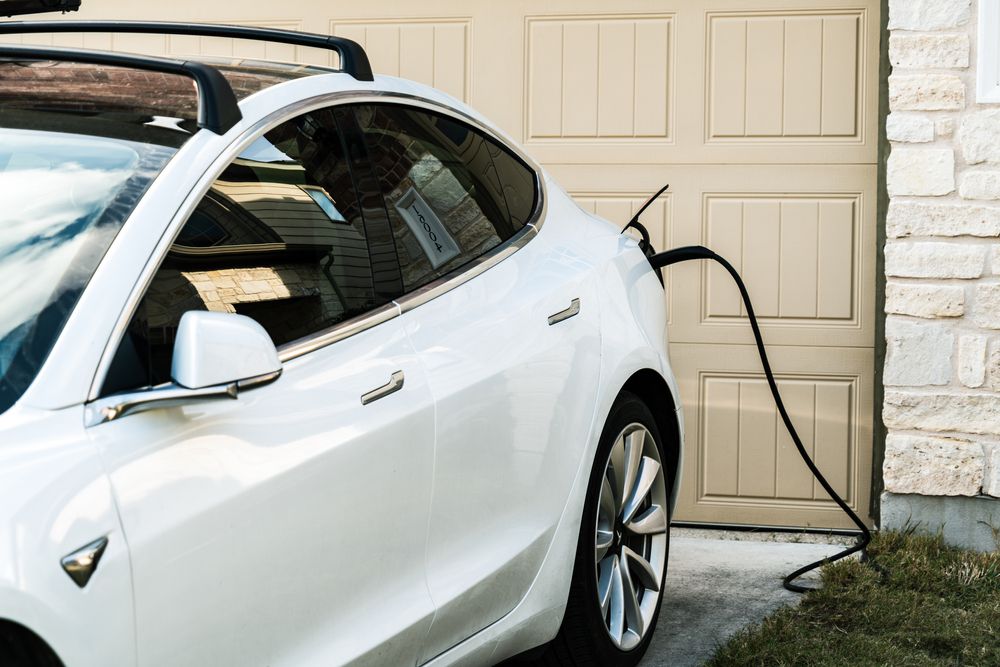A common misconception is that you can put gas into a Tesla.
All the Tesla vehicle models are recognized as “fully electric,” meaning they use batteries to power an electric motor instead of gasoline powering an internal combustion engine. You couldn't put gasoline fuel in a Tesla car if you tried, as there isn't a fuel tank or opening.
Instead, these cars solely use Superchargers, wall connectors, and other types of charging stations to fuel up.
Below, we're exploring the specifics of why you can't put gas in different Tesla models (including Model X and Model 3). We'll also cover the differences between hybrid and fully electric cars and why Tesla doesn't offer any hybrid vehicles.
 Tesla at a charging station
Tesla at a charging station
Do Teslas Use Gas?
Fans of traditional internal combustion engines will be disappointed to learn that Tesla vehicles do not use fossil fuels to power themselves.
In fact, unlike hybrids such as the Toyota Prius, Teslas do not even have fuel tanks, instead relying 100% on battery power.
Instead of going to gas stations, Tesla vehicles are charged at charging stations via electric ports on the side of the vehicle in place of a traditional fuel tank opening.
The types of charging stations where Tesla owners can charge their batteries are:
Tesla wall connectors allow you to charge your Tesla at home
There are Tesla charging adapters for those without wall connectors
Tesla owners can use any of the 30,000 Tesla charging stations known as “Superchargers” located across the world (the fastest charging option)
Third-party charging stations are offered through companies that use the compatible power adapters
Destination charging stations are offered at specific locations, often hotels, across the nation. They charge slower and are meant to charge a vehicle overnight.
 Smaller and slower destination charging station.
Smaller and slower destination charging station.
Tesla cars are known for their high-range batteries compared to vehicles like the Nissan Leaf.
Can You Put Gas In A Tesla Model X?
You cannot put gasoline or any other kind of liquid fuel in any Tesla model vehicle, including the Tesla Model X.
The Tesla Model X comes with 100 kWh lithium-ion high-capacity battery packs with a range of up to 325 miles.
 Tesla Model X charging at a Tesla supercharger
Tesla Model X charging at a Tesla supercharger
Can You Put Gas In A Tesla Model 3?
Just like you cannot put gas in any other vehicle in the Tesla lineup, you cannot put gas into a Tesla Model 3.
The Tesla Model 3 Long Range is equipped with a 75-kWh battery pack with a 310-mile range.
 Tesla Model 3 charging at home via wall charger
Tesla Model 3 charging at home via wall charger
What Happens If You Put Gas In A Tesla?
In short, you simply can't put gas in a Tesla vehicle. You could try, of course, but since there is no gas fuel tank or tank opening to insert a gas nozzle, you'd make a mess and possibly damage electronic components.
Can You Put Gas In Any Electric Car?
Although electric cars with only an electric motor cannot and do not use gasoline fuel, hybrid vehicles, which have both an electric and an internal combustion engine, run on gas and battery power.
Hybrid vehicles - are those that have both an electric and an internal combustion engine and can switch between the two depending on the circumstances.
The benefit of a hybrid engine is that you get the best of both worlds; battery power for short trips while having the option of taking longer trips without the need to charge due to having the gasoline-powered engine.
The thing about hybrid vehicles, though, is that they don't take the same electric charge fuel that fully electric cars (like Teslas) do. In fact, many don't even have an electric charging port to do so in the first place.
The most well-known hybrid currently on the market is probably the Toyota Prius; however, virtually all major manufacturers offer a hybrid model.
Hybrid Vs. Electric MPG Equivalent Comparison
| Model |
Combined MPG (equivalent) |
| Tesla Model 3 Long Range Full Electric |
141 MPG |
| Toyota Prius Limited Hybrid |
54 MPG |
| Hyundai Ioniq Limited Hatchback Hybrid |
54 MPG |
| Hyundai Ioniq Limited Hatchback Full Electric |
133 MPG |
Does Tesla Use Gas And Electric?
Currently, Tesla does not offer, nor do they have plans to offer any hybrid vehicles. Instead, they are all fully electric, meaning they do not release any carbon dioxide when in use and never use gasoline.
The Tesla company has often stated that it only plans on manufacturing fully-electric vehicles, so it is improbable that it will ever introduce hybrid (gas and electric) or gas-only vehicles to its product line.
In fact, in 2006, Tesla's co-founder Martin Eberhard compared Tesla's products to hybrid cars, noting that hybrid cars support a world “addicted to oil.”
Conclusion
Hopefully, our guide has cleared the air on whether or not you can put gas in a Tesla vehicle.
The Tesla Company was founded and continues to be committed to only manufacturing fully electric vehicles.
Tesla vehicles - including Model X, Model 3, and other models - are fully-electric. Meaning that they are all equipped with electric charging ports, can't receive gas fuel, and must be charged at a power station.
Other than having fuel energy like a hybrid car would, Tesla vehicles get charged and thus provide greater fuel efficiency and save the user money on fuel annually compared to a traditional combustion engine vehicle.